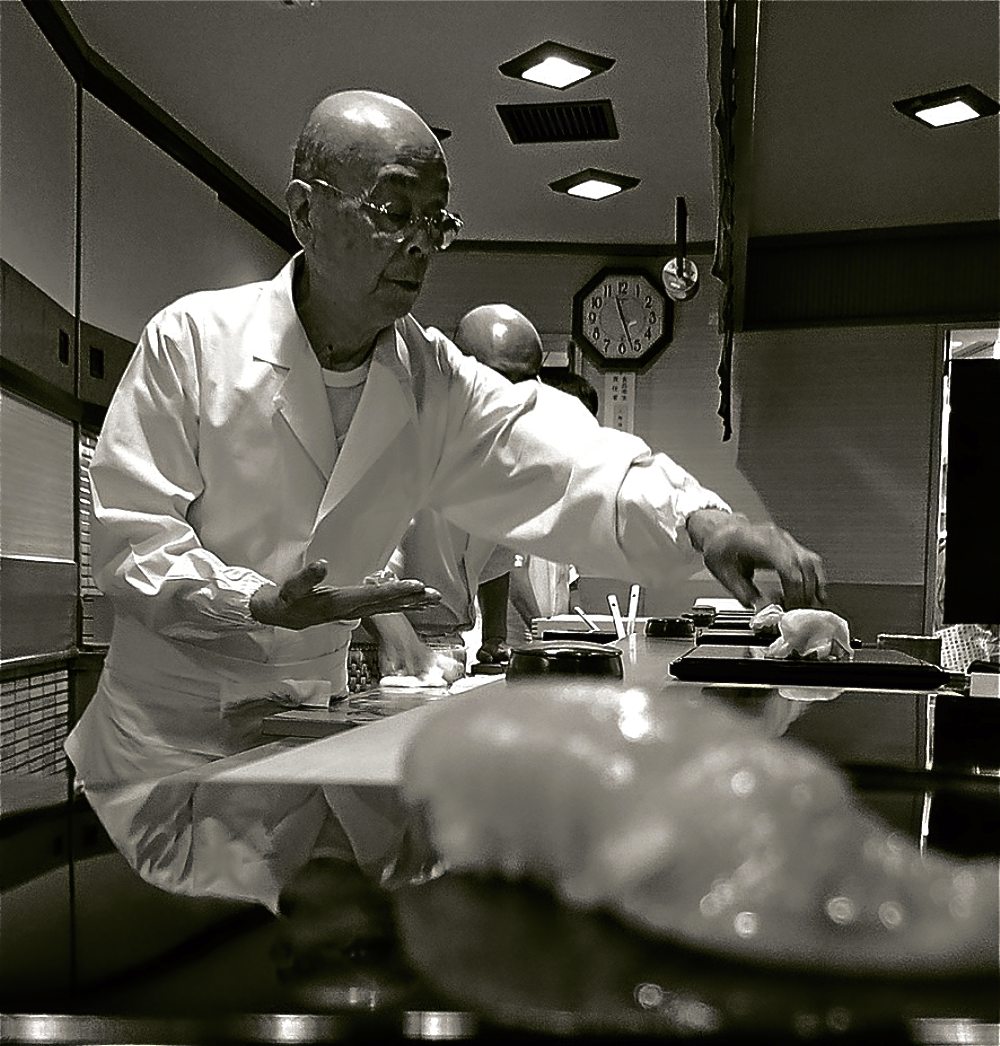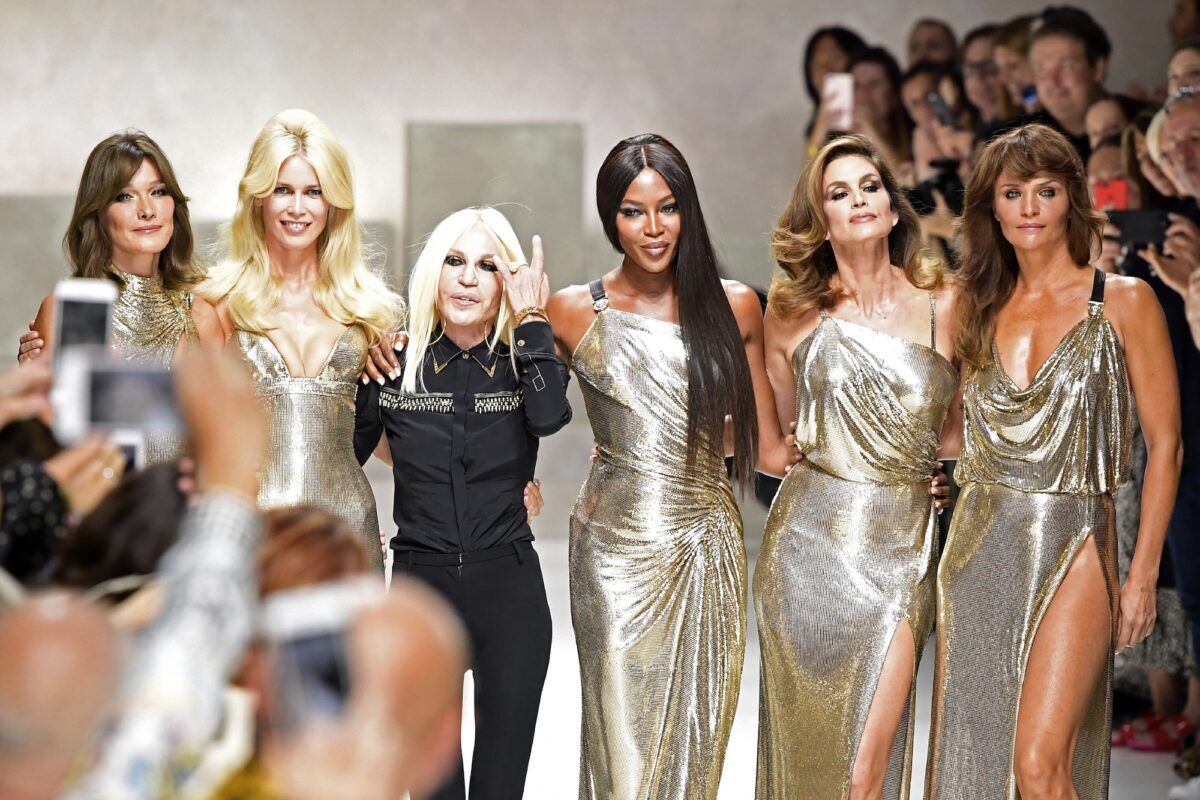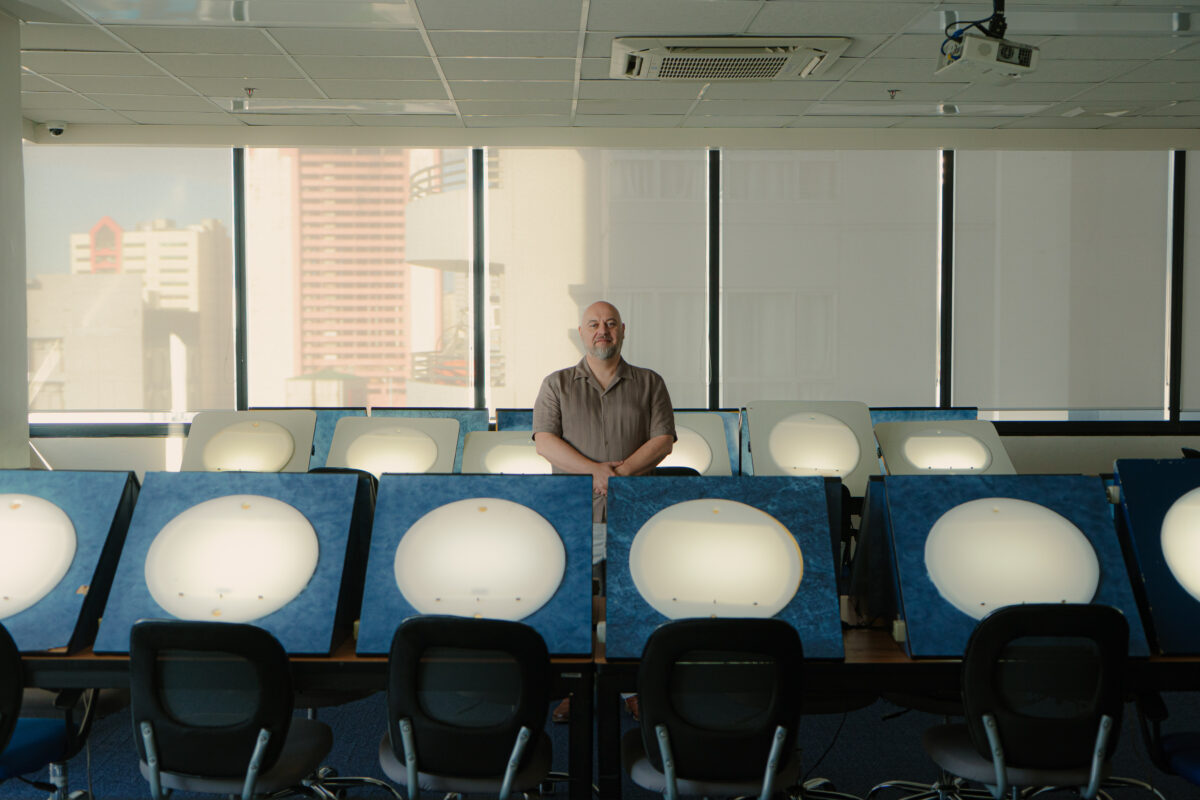(Author’s note: I am neither food writer, food critic nor food photographer. I am simply a writer who loves sushi.)
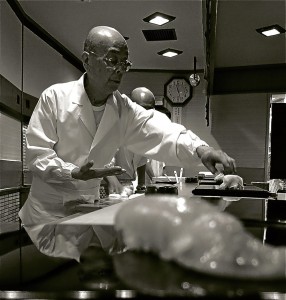 “Once you decide on your occupation you must immerse yourself in your work. You have to fall in love with your work. Never complain about your job, you must dedicate your life to mastering your skill. That’s the secret of success and the key to being regarded honorably. I’ve never once hated my job, I fell in love with my work and gave my life to it.”—Jiro Ono in “Jiro Dreams of Sushi”
“Once you decide on your occupation you must immerse yourself in your work. You have to fall in love with your work. Never complain about your job, you must dedicate your life to mastering your skill. That’s the secret of success and the key to being regarded honorably. I’ve never once hated my job, I fell in love with my work and gave my life to it.”—Jiro Ono in “Jiro Dreams of Sushi”
Last year, I watched the documentary “Jiro Dreams of Sushi.” I learned of Jiro Ono, a master sushi chef and owner of Sukiyabashi Jiro, a three-star Michelin-awarded restaurant in Ginza, Tokyo. The Michelin guide awards one to three stars to a small number of restaurants of outstanding quality.
One star indicates “very good cuisine in its category”; two stars represent “excellent cuisine, worth a detour”; and a rare three stars are awarded to restaurants offering “exceptional cuisine, worth a special journey.”
At age 86, Jiro Ono holds the Guinness record for being the oldest chef to be awarded three stars.
Watching the documentary, I was enthralled by how well-made the film is. Filmmaker David Gelb has given the world a wonderfully sweet symphony dedicated to the art of making sushi. From the freshest seafood to the best-quality rice, you are swept along on this journey of one man’s life quest to make the best sushi there is to be found.
In the film, Jiro says, “In order to make delicious food, you need to eat delicious food. The quality of ingredients is important, but one must develop a palate capable of discerning good and bad food. Without good taste, you can’t make good food.”
Jiro is a true shokunin—an artisan who strives to achieve perfection in his chosen craft. At 86, he is still constantly striving to be better than he already is, working each day, determined to make the perfect sushi.
Amazing food shots accompanied by classical music playing throughout the movie made me smile in anticipation of eating my next sushi meal. But more than that, I loved the simple wisdom of Jiro, things he would say throughout the film. His sense of humor had me laughing out loud at some of his lines, especially one quite funny but irreverent one he said in front of his parents’ graves!
Impossible
In late 2011, my husband and I opened Yabu, an authentic Japanese Katsu restaurant. Because of this, we have made a number of trips
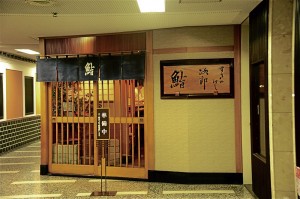
to Japan.
We go to immerse ourselves in Japanese culture or simply to see how restaurants are run, how disciplined and dedicated they are to their craft. We eat in as many different restaurants as we can, just to observe and taste.
“Jiro Dreams of Sushi” more than reinforced all the things we had come to know about Japanese culture and food preparation.
Prior to this, I had never heard of Jiro Ono. Yet when I was in Japan and would ask about him or his restaurant, faces would light up and they would speak almost reverently of him and his restaurant. I was told he has been declared a national treasure.
On a recent trip to Tokyo that coincided with our 23rd wedding anniversary, I planned to surprise my husband with a trip to Jiro’s restaurant, if I could swing it. It is normally booked months to a year in advance.
It’s a little 10-seater restaurant, no wonder it’s next to impossible to get a reservation here. It also turned out that Jiro’s is closed on a Sunday, our anniversary.
I asked the concierge at my hotel to inquire about lunch on Tuesday. Because it was Saturday, she doubted if I could get a reservation on such short notice. She made the call, then smiled and excitedly told me, “It’s miraculous that you can get a reservation! But first, I must tell you about their rules.”
1) You must be on time. They do not allow lateness.
2) There is no menu, it is all chef’s choice and you cannot make requests. A meal consists of 19 pieces of sushi, whatever is available fresh from the market that day. That is all.
3) No wearing perfume.
4) You must pay cash. (This is important to know because a meal at Jiro’s costs Y30,000 or roughly US$350 per person.)
5) No cancellations. If you cancel, there will be a Y15,000 cancellation fee.
6) The meal will last only approximately half an hour.
If the rules were okay with me, she would go ahead with the reservation. She added, “Jiro does not always make the sushi himself anymore, I am told, but he is at the restaurant every day.”
Experience
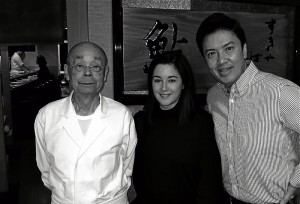
Not giving it a second thought, I made the reservation. After all, this was our anniversary meal. When I told my husband about it, he was thrilled. We were both excited.
Normally, I would not pay this price for a meal. My husband would be the first to say that I will always scrimp and save whenever I can. But this was special for us—not just a meal, but an experience.
Sukiyabashi Jiro is in the basement of a nondescript office building in Ginza. Directly across from the Sony building, around the corner from Gucci and a Nikon outlet, just down the road from Pritemps department store, near the most expensive real estate in the world. If you didn’t have exact directions, you could easily miss it.
Down a flight of stairs next to a store called The Suit Company which actually leads to the train station, a glass door on the left leads to the building’s basement and inside to the right is a simple glass-slatted door. This is Sukiyabashi Jiro.
When I walked into the restaurant, one of Jiro’s young apprentices approached, smiling, asking if we have a reservation. Upon giving our name, he nodded and gestured us in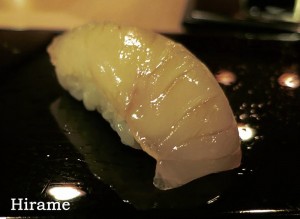 side to a smiling, friendly woman at the cash counter. She took our coats.
side to a smiling, friendly woman at the cash counter. She took our coats.
As I looked up, Jiro Ono was standing a few feet away. He turned and disappeared behind a curtain, only to reappear a few seconds later behind the sushi counter. I was so thrilled to see him begin preparations. We had hoped but had not expected to be served by Jiro himself.
The restaurant is very small. A sushi counter for 10 people lined one side, two tables against the wall in front of the sushi counter, and one table in front of the cashier. The dining area could not have been more than 30 sq m, small enough to be run only by Jiro, his son Yoshikazu, one shokunin, three apprentices and the woman cashier.
Apprentice
We were slightly early for our reservation so there were no other guests in the place. I raised my camera to take a photo, but the apprentice came and said politely, “No photos of place, only of the sushi.”
We were led to the first two chairs on the left and sat down. Another Japanese couple arrived and joined us, sitting a few seats to our right. They looked like a young married couple; the man was in a dark suit, a common sight in Tokyo, the woman in white sweater with pearls around her neck.
Soon after, one apprentice appeared with hot towels for our hands. He also put a little rubber liner on the table so I could rest my camera on it. He asked us what drinks we wanted. My husband opted for tea, and I, water.
The apprentice placed a printed list in front of us. In halted English he said, “This is menu today. Anything you do not like?” We both glanced through the list, some items unfamiliar to us. We both shook our heads, accepting the entire course. If we were to do this, we would do it right, chef’s choice all the way.
Of the two of us, I am the much less adventurous sushi lover, sticking to old sushi favorites. So, I whispered laughingly to my husband, “I’m nervous! What if there is something I don’t like?”
Before I could finish the thought, Jiro stood in front of us. He is of medium height, bald and bespectacled, a stern-looking man.
His stern look disappeared when I smiled at him and he smiled back. He bowed toward us in greeting, our heads bowing toward him in return. I was a little star-struck, I must admit. After all, Jiro has been called “the greatest sushi chef in the world.”
Dance in motion
Jiro then became completely focused and started working. Watching Jiro’s hands make sushi was like watching a graceful dance in motion. He twirled pieces of fish between his fingers quickly. He caressed the rice as he palmed it, his hands fisting around the rice forming a perfect shape.
It was a continuous dance with each preparation—a dip of fingers in the fresh wasabi, and then a dab of a brush in the soy sauce as he painted each sushi piece lovingly with his brush. He was the artist and this entire meal was his canvas.
He worked quietly and intently. He walked over and placed the first piece in front of me. It was hirame (halibut). The soy sauce brushed across the top and glistened in the light. It was time to have our first taste of Jiro’s famed sushi.
‘Wow’
First thing I noticed when I picked up the sushi with my fingers was the temperature of the rice. It was neither hot nor cold, something like the temperature of my body.
I put the entire piece into my 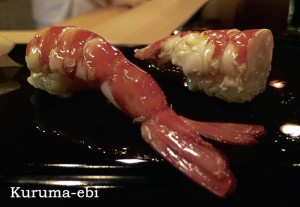 mouth in one bite. I closed my eyes in pleasure, and I could hear my husband say a muffled “wow” next to me.
mouth in one bite. I closed my eyes in pleasure, and I could hear my husband say a muffled “wow” next to me.
Next thing I observed was how wonderfully soft the rice was, this special grade of grain made only available to Jiro from his supplier.
I felt the strong vinegar flavor and loved it immediately. The combination of just the right amount of rice, vinegar, wasabi and soy sauce blending with the perfect thickness of fish was incredible. It was the perfect piece of sushi, yet also the simplest—truly a study in contrasts. It was a wonderful start of our meal.
I smiled as I watched the Japanese couple next to us. The small, shy smile that appeared on the woman’s face as she closed her eyes eating the first piece said it all.
The rest of the sushi came in succession.
Holy tuna trinity
Sumi-ika is a glossy white squid with a nice chewy bite to it. But it was quite soft and tender. I do not normally eat squid sushi because of how tough it sometimes is, but I enjoyed this.
Buri, or young yellow tail sushi, was soft and melted in my mouth, its fishy flavor complemented well by the soy sauce and vinegar rice.
I have often heard foodies speak of the “holy trinity of tuna.” I never thought of tuna that way. But we do love it, so we were very excited when Jiro brought us the next three:
Akami (lean tuna), beautifully red, simple, soft, shining with a brush of soy sauce. It was amazingly good.
Chu-toro (semi-fatty tuna), pink in color, had a slight marbling of fat throughout. It melted in the mouth, its flavor delicious.
Oo-toro (fatty tuna) was undeniably the best of the three—covered in fatty marbling over its pink surface, and velvety smooth. Again it melted in the mouth. It was the best tuna we have ever eaten.
After a drink of water to cleanse my palate, Jiro brought out the next piece, a gleaming silver fish called kohada (gizzard shad). This was a cured fish that I thought was excellent! It was my first time to try it. The vinegar flavoring and texture reminded me a lot of Spanish boquerones.
I had never eaten akagai (ark shell), and when it was laid out in front of me, I hesitated for a moment. My husband ate his serving first and said, “Don’t worry, you’ll like it.” Slightly sweet, a little chewy, albeit a bit slimy, it tasted very good, indeed.
The next piece was brought to us by the apprentice. It was tako (boiled octopus). He said, “No soy sauce please. Salted.”
The slightly warm and tender octopus burst with flavor from the salt that Jiro flavored it with. It had a chewy, soft texture, no doubt the result of being massaged for 45 minutes as Jiro had taught his apprentices.
As the tenth piece of sushi came, I realize we had reached the halfway mark. The aji (jack mackerel) is a soft, fishy-tasting morsel that was equally good.
At this moment we noticed Jiro and his son Yoshikazu switch places. His son was now serving us. I thought, maybe this was for the benefit of the other customers, so Jiro can serve them as well.
By now there was another Japanese lady seated at the counter eating next to the Japanese couple. She spoke to Jiro every so often as she ate.
Boiled prawn
Yoshikazu served us the kuruma-ebi (boiled prawn). It was outstanding! Served in two parts, head and tail, the head was supposed to be eaten first. This prawn was supposedly cut in such a way as to preserve the flavor of the head. It was boiled only a few minutes before being served, so it was extremely fresh and flavorful, the texture perfect. We both loved it.
Sayori (needlefish) was a very different-looking fish with a stripe down the middle. It was soft, slightly fishy in taste, but very good.
Hamaguri (boiled clam) was a deliciously sweetened clam, glistening with sweet glaze, flawlessly cooked to give it a soft, slightly chewy texture. Wonderful!
Saba (mackerel) had a lovely vinegar flavoring and it was just delicious! No soy sauce needed to enjoy this.
Uni sushi
I am a late convert to the appreciation of uni (sea urchin). For many years, I didn’t like it. Whenever my husband would eat uni, I would pick at his piece and then taste it a bit. Not liking the strong taste, which was sometimes overly fishy or bitter, I convinced myself I really did not like it.
But in 2011, a day before the great Japan earthquake, I found myself in a little sushi place called Daiwa at Tsukiji Market in Tokyo. A piece of uni sushi was served; I ate it and realized it was simply delicious. Unbelievably fresh and creamy. Nothing ever came close again. I had dreamt of that uni ever since.
At Jiro’s I watched excitedly as a small boxed tray filled with uni lay on the counter. It looked like little mountains of cream. A scooper came in and one perfect scoop of uni was laid on top of a bed of rice, wrapped in nori.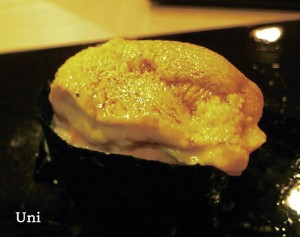
We picked up the entire roll and put it in our mouths. We smiled and alternately moaned in pleasure. The uni was fresh but ice-cold, so soft and creamy it was almost like a velvet mousse melting in your mouth.
The nori was perfectly crispy, hand-toasted over a flame grill earlier; the vinegared rice complemented the taste so impeccably.
But there really are no words to adequately describe Jiro’s uni sushi. I will dream of it for a long, long time.
Next, kobashira (baby scallops) was brought out, Jiro serving us again. On a bed of rice and wrapped in crunchy nori, sweet and slightly glazed with sauce, the baby scallops were tender and flavorful.
Ikura (salmon roe) was served next. I do not usually like ikura because of the extreme saltiness of the roe. Jiro must have some secret way of preparing this, because the salt level seemed very low. I loved the flavor that mingled with the rice and nori, as each ball burst in my mouth.
Best ‘anago’
After drinking water, I sadly realized there were only two pieces left, and my meal with Jiro would soon be over. But I waited with anticipation for the next piece, my absolute favorite of all, anago (sea eel).
One bite and again I found myself softly moaning in pleasure. Perfect texture, meaty and sweet, this was the best anago I’ve tasted, ever.
The last piece presented, a perfectly formed square tamago (egg), looked very different from others I have eaten. This was more cake-like in texture, and sweet. I liked it, though I thought it could be less sweet.
When the 19 pieces of sushi were served, the chefs exclaimed something in unison, like a signal that ended the meal. Jiro looked our way and nodded his head.
The entire meal took around 25 minutes. Though it seemed very quick, it did not feel rushed at all. I even had time to take a photo of each item as it was being served to us.
We ate at our own pace, savoring each bite, marveling at the flavors we were experiencing.
Perfect pacing
The pacing was perfect. As we finished each piece, a new one came out at almost the exact moment we were done chewing.
It is said that sushi must be eaten as soon as it is placed in front of you, because each ingredient is perfect at that very moment.
The apprentice watched us intently throughout the meal. If my glass of water was almost empty, he went to fill it up. If my husband’s tea was getting cold, he brought out a new steaming cup. He was very attentive and thorough. If my plate got dirty, he wiped it clean before the next piece arrived.
We ended the meal with full stomachs. When the apprentice asked if we wanted more, we regretfully declined, though I felt like kicking myself now for not having had one more piece of uni and anago.
After finishing our sushi, we were asked to transfer to the tables in front of the counter, leaving our space open for the second lunch seating.
The dessert was then served. One perfect slice of ice-cold, extremely sweet, juicy musk melon. Musk melon is said to be one of the most expensive kinds of melon in Japan. In Tokyo, a single melon can cost anywhere from Y5,000-Y40,000.
As we got up to leave, Jiro went outside with us. With a small smile he gestured for me to stand near him for a photo. The picture-taking done, he turned toward us and bowed, thanking us in Japanese.
Pure precision
I wished we could have spoken to him a bit, but there was the language barrier, and he had to go back in to serve his newly arrived customers.
So, was it worth the price? Was the experience worth all that?
The sushi definitely was outstanding. It was also the fastest, simplest, no-frills meal we have ever eaten. Yet in its simplicity was pure precision and excellence. It was, from beginning to end, a mesmerizing performance, a homage to the art of making sushi.
Having watched the documentary and knowing what a life quest this has been for Jiro, the 10 years it takes to apprentice under Jiro before one becomes a shokunin, how much preparation goes into making the rice, curing the fish, hand-toasting the nori, massaging the tako, all the flawless little details behind the scenes that contributed to this one perfectly thought-out meal, it certainly was more than worth it.
It was truly a sublime experience—the chance to meet Jiro, watch him work and have the honor of being served by him. This small, unassuming man who, at 86, is still on a life journey to achieve perfection in his craft. How inspiring is that?
Because of this one perfect meal, like Jiro, I will forever be dreaming of sushi.
(Information on the definition of shokunin is from “Japanese Woodworking Tools: Their Tradition, Spirit and Use” by Toshio Odate.)

